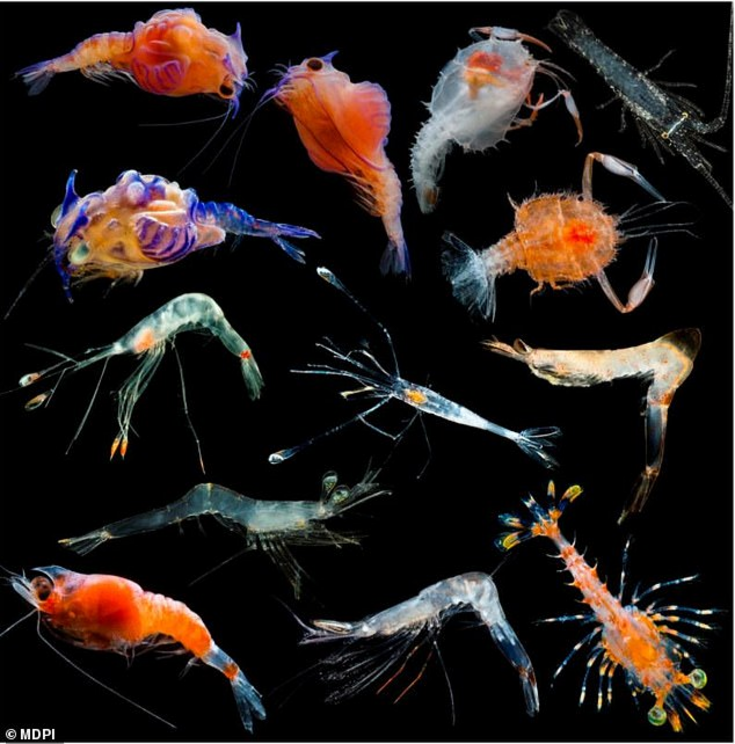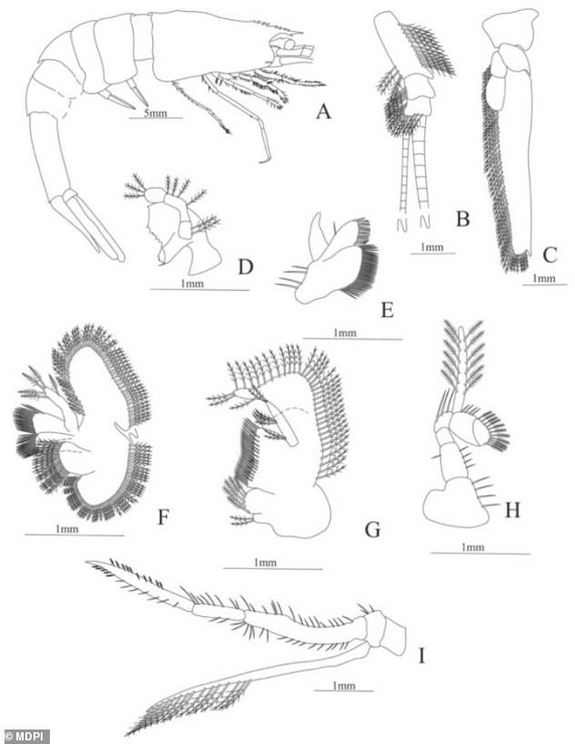Scientists identify 14 new species of shrimp and lobster larvae with horns and spikes that look 'part alien' and live as deep as 3,000 feet underwater in the Gulf of Mexico
- Most of the creatures are shrimp, though some of them are lobsters
- Some have horns on their heads, others have 'misshapen torsos' or spikes coming out of their sides
- The larvae come in shades of orange or blue, but some are see-through
- Of the 14 creatures, 12 were unknown larval species and two were juvenile species from the infraorder Caridea and the suborder Dendrobranchiata
Just in time for Halloween.
Scientists have identified 14 different species of larvae that were once believed to be different species which live in the deepest parts of the Gulf of Mexico, surpassing 3,000 feet.
Most of the creatures are shrimp, though some are lobsters, according to the study's co-author, Heather Bracken-Grissom.
Some of the creatures have horns on their heads, 'misshapen torsos' and others have spikes coming out of their sides.
 Scientists have identified 14 different species of larvae that were once believed to be different species which live in the deepest parts of the Gulf of Mexico, surpassing 3,000 feet. Most of the creatures are shrimp, though some of them are lobsters
Scientists have identified 14 different species of larvae that were once believed to be different species which live in the deepest parts of the Gulf of Mexico, surpassing 3,000 feet. Most of the creatures are shrimp, though some of them are lobsters
 Some of the creatures have horns on their heads, 'misshapen torsos' and others have spikes coming out of their sides
Some of the creatures have horns on their heads, 'misshapen torsos' and others have spikes coming out of their sides
The larvae, which come in different shades of orange, blue (some are even see-through) have bizarre features compared to the adult versions of the sea creatures.
Of the 14 creatures, 12 were unknown larval species and two were juvenile species from the infraorder Caridea (shrimp) and the suborder Dendrobranchiata (prawn).
'For many groups, larval descriptions are missing or non-existent, so this study represents a first step of many to advance deep-sea larval diversity,' the authors wrote in the research.
Bracken-Grissom, who is an assistant professor at Florida International University, notes that sea shrimp usually go through multiple larval stages and it's possible that some of the creatures captured in the northern Gulf of Mexico are going through different stages.
 It's possible that some of the creatures captured in the northern Gulf of Mexico are going through different stages
It's possible that some of the creatures captured in the northern Gulf of Mexico are going through different stages
 Of the 14 creatures, 12 were unknown larval species and two were juvenile species from the infraorder Caridea and the suborder Dendrobranchiata
Of the 14 creatures, 12 were unknown larval species and two were juvenile species from the infraorder Caridea and the suborder Dendrobranchiata
 Some of these species, including one known as Plesiopenaeus armatus, have only been seen a handful of times and some, like Meningodora vesca (pictured), never at all
Some of these species, including one known as Plesiopenaeus armatus, have only been seen a handful of times and some, like Meningodora vesca (pictured), never at all
Some of these species, including one known as Plesiopenaeus armatus, have only been seen a handful of times and some, like Meningodora vesca, never at all.
'I like that we're getting to reveal this mysterious and bizarre world that we don't typically get to see,' Bracken-Grissom said in a statement.
The creatures were identified using DNA barcoding along with morphological methods to match the larval creatures to their adult counterparts.
Bracken-Grissom initially identified Plesiopenaeus armatus in 2012, however, she mistakenly classified it as Cerataspis monstrosa.
Many of the creatures live in the mesopelagic or 'twilight' zone of the ocean, an area between 650 and 3,200 feet (200 to 1,000 meters), Bracken-Grissom explained.
When they become adults, they settle even further down in the ocean, she added.
'Most are prey items for fish, deep diving marine mammals and cephalopods, which means they are important to the food chain.'
The researchers will continue their studies into the 14 creatures to learn more about their lifecycles and what their parents look like.
The research has been published in the scientific journal Diversity.

